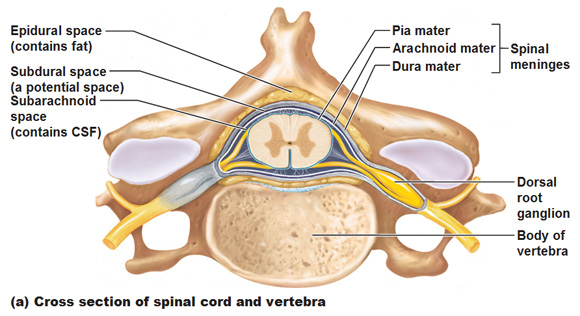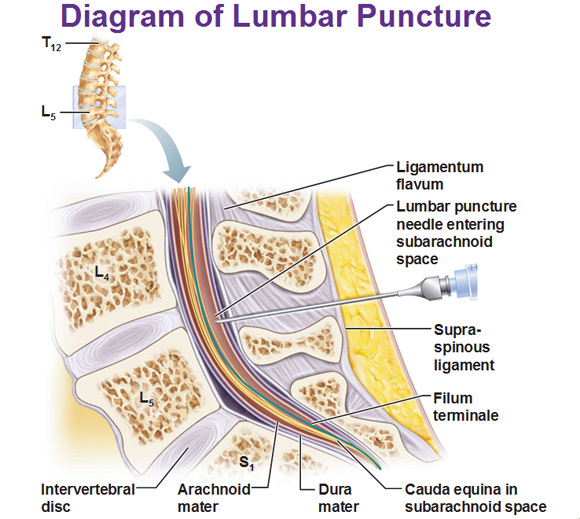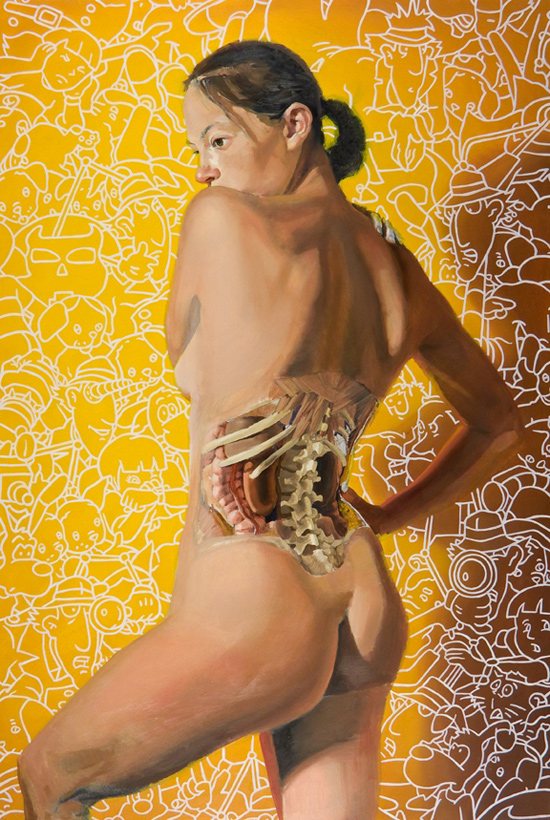Central Nervous System: Spinal Cord

The central nervous system basically includes the brain and the spinal cord. There are two additional directional terms that are used for the CNS: Rostral (toward the nose) and Caudal (toward the tail).

In the picture above we see the spinal cord and its nerve roots as everything in yellow with the bony vertebral arches removed. The duramater and arachnoid mater are cut open and reflected laterally.
As you could see the labels on the right side, the names are based on the vertebrae names which is very easy. We have a few specific sections though such as…
Conus Medullaris: This is the bottom of the solid cord that ends around L1 and starts to be a cone shape.
Cauda Equina: The spinal cord at the lumbar & sacral nerve roots are strands that are like a horses tail. (Cauda means tail, like caudal meaning toward the bottom, and equina means horse from equine/equestrian)
Filum Terminale: This is connective tissue that helps anchor the spinal cord to the coccyx.
Note that there is an 8th cervical nerve even though there are only 7 cervical vertebrae because nerve C1 starts above the atlas and all the others are in between the vertebrae.

The spinal cord runs through the vertebral foramen. Look at that fat dorsal root ganglion. That is where the cell bodies of the somatic sensory neurons are contained. Also note that the dorsal root ganglion comes from two roots. One is the dorsal (back) root and the other is the ventral (anterior) root. These two roots blend together to become a spinal nerve like C7, C8, T1, etc.
The spinal cord has 3 layers of protection aka meninges:
Dura mater = the tough (durable) outer layer.
Arachnoid mater = called this because it has spider-web/leggy appearance.
Pia mater (soft mother) is a very delicate layer that attaches to the spinal cord and follows the contours of the cord or brain.
There’s also 3 spaces:
Subarachnoid: deep to the arachnoid mater that contains CSF.
Subdural: a potential space below the dura mater.
Epidural: Fat.
We look at the meninges in the brain with greater detail in this article: Protection for the Brain: Meninges, CSF, Blood-Brain Barrier
The center of the spinal cord = Cerebrospinalfluid
CSF bathes the inside and outside of the spinal cord and the brain and provides a liquid cushion. It also lets them float so that the brain doesn’t get crushed under its own weight. Other notable things… Nourishes brain and spinal cord, removes waste and carries hormonal and chemical signals between parts of the CNS.
Now let’s move onto the lumbar puncture…

A lumbar puncture is commonly called a spinal tap and doctors will do it when they need to test CSF. Remember the subarachnoid space contains CSF? Well a needle needs to go through to that level and remove fluid from there. The patient will curl into a ball, making the space between L4 and L5 as large as possible. The least amount of damage could be done between L4 and L5 because the spinal cord is the cauda equina so it’s a bundle of thin nerves and when the needle goes through, the individual nerves move out of the way.
Use this Table of Contents to go to the next article

YOU ARE HERE AT THE CNS






